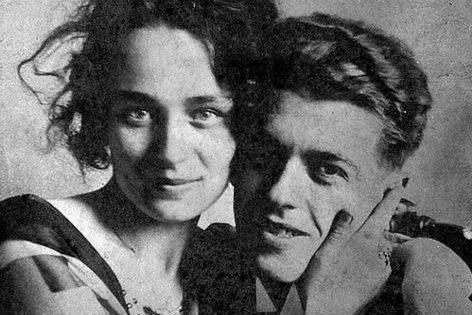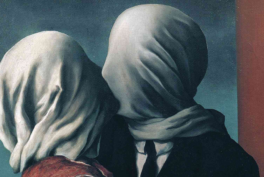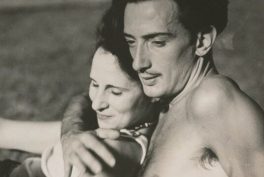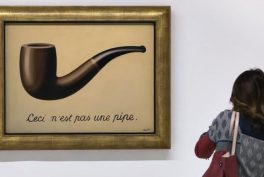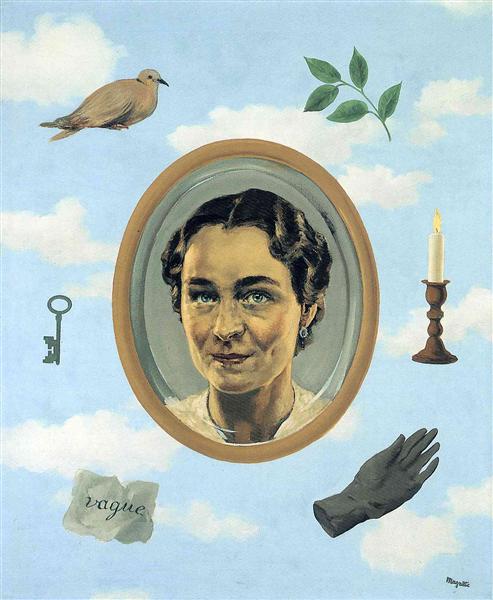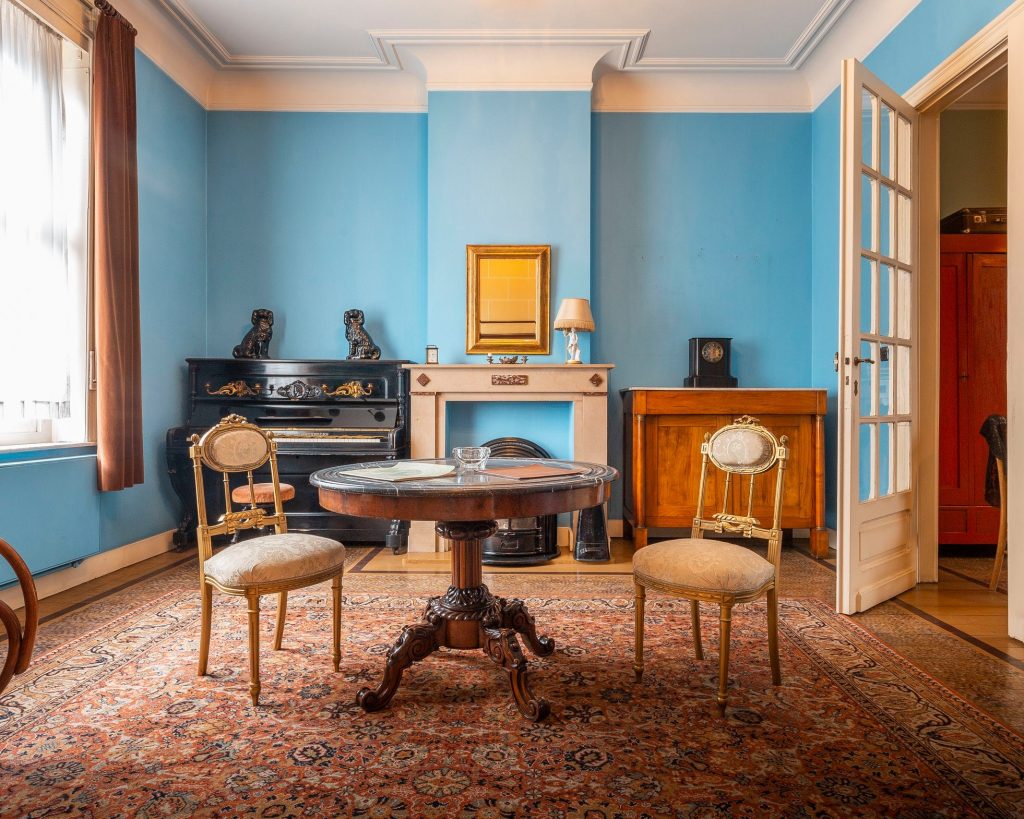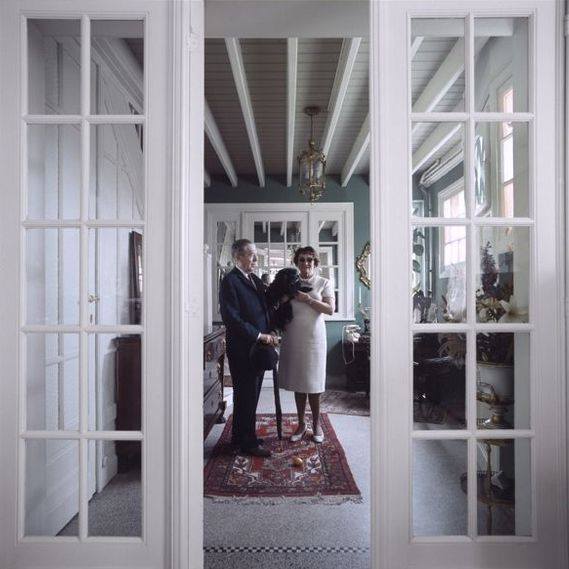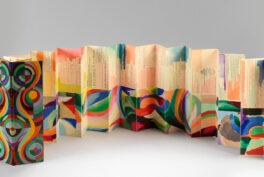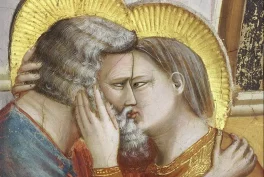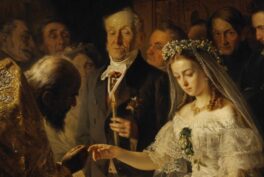When young René Magritte met Georgette Berger, it was love at first sight. René, barely fifteen at the time, first met the twelve-year-old daughter of a local butcher on a carousel at the Charleroi town fair. Just a few years earlier, Magritte had lost his mother to suicide. Meeting Georgette would prove to be the stability he needed and had longed for following his mother’s death.
However, the young couple would soon be parted when the Germans invaded Belgium in 1914. Georgette’s parents moved to Brussels, and shortly thereafter Magritte also traveled to the Belgian capital, where he studied at the Royal Academy of Fine Arts. In 1920, after having lost touch for six years, they would fortuitously meet again at the Brussels Botanical Garden.
Marriage
This time, René decided he would not let Georgette slip away. On June 28, 1922 the two were married at Saint Mary’s Royal Church in Schaerbeek. In the beginning, René worked in a wallpaper factory and as a graphic designer. Georgette earned the couple’s main income by working at her family’s art supply store, where René initially bought the majority of his paints.
An Outrageous Provocation
After moving to Paris, Magritte became acquainted with André Breton, the leading theorist of the Surrealists, and was almost immediately accepted into the group. In 1929, he presented his paintings alongside those of Dalí, Miró, and Picasso. However, Georgette would soon be the source of a falling-out between Magritte and Breton after she was insulted for her choice of jewelry at a dinner party hosted by Breton. According to another guest that evening,
Magritte reportedly stood up for his wife, and the couple remained at the party until the end of the evening. The relationship between Magritte and Breton was changed forever—the two did not speak for the following eight years, causing a schism between French and Belgian Surrealism.
London Calling
In 1937, Magritte was commissioned to work on a painting for his patron Edward James. He travelled to London, where, out of sheer boredom, he began an affair with a young female Surrealist “groupie” named Sheila Legge. Though short-lived, the affair pushed Georgette to begin her own affair back home. Many attribute these brief affairs to a mid-life crisis.
Magritte’s Muse
Throughout René’s life—bumps and all—Georgette was his foremost muse and one of the main founts of inspiration for his work. Georgette’s features can be clearly perceived in many of the artist’s female subjects. In fact, Magritte painted at least one portrait of his wife in each of his artistic periods. While Georgette reportedly did not understand the majority of her husband’s work, her support for him was unwavering.
The Magritte Home
Magritte was a self-proclaimed homebody whose most famous works were painted from the comfort of his own home. According to one report, he would have to make room when Georgette served dinner, pushing his easel aside.
In 1967, after René’s death, Georgette made sure their house remained just as he had left it—the unfinished work on his easel and all. In 1999, the Magritte home was made into a museum. The rooms seem strangely familiar to us, as if we’ve already been inside them. They are, in fact, the very settings featured in many of the artist’s most well-known works.
Together Forever
The love story between René and Georgette stood the test of time. It would go on to inspire generations of creatives, including Paul Simon, who in 1993 released a ballad entitled René and Georgette Magritte with their Dog After the War. While the couple remained childless, they had a series of Pomeranians—all named Loulou—whom they loved dearly. In 1967, René died of pancreatic cancer. Georgette would go on to live nearly 20 more years and was buried next to him at the Scharbeck cemetery near Brussels in 1986. To this day, it is clear that René was madly in love with Georgette. The energy of love between them is still palpable—in their story, in their home, in his art.
